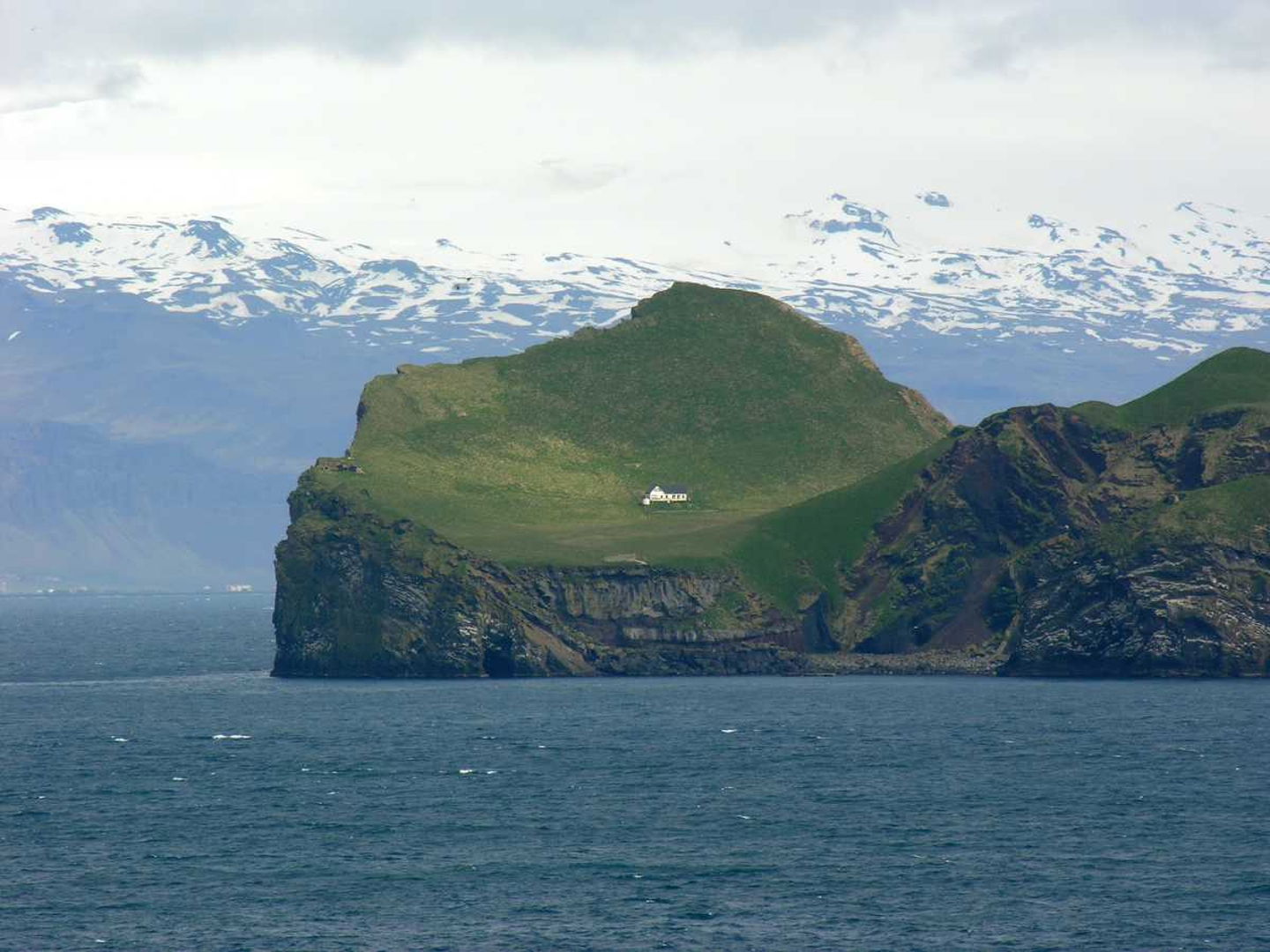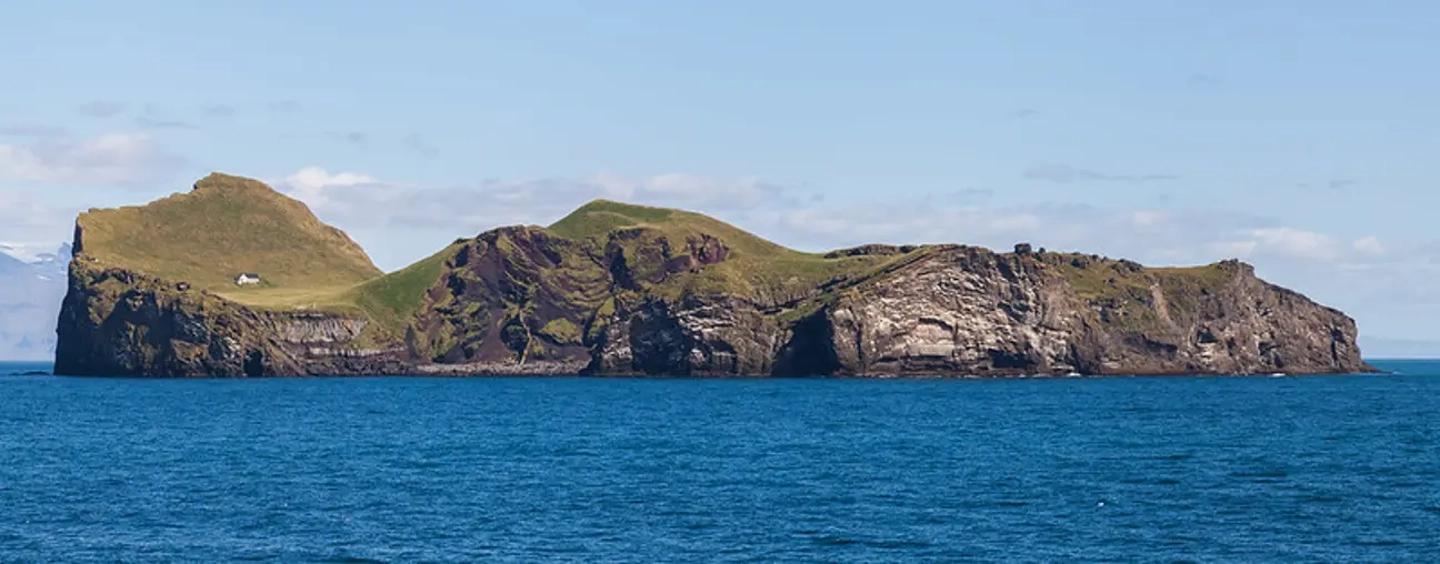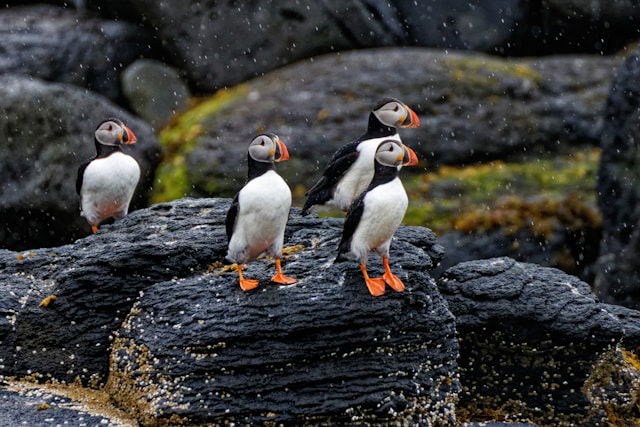Iceland’s lonely house has become one of the internet’s most fascinating mysteries. Sitting quietly on a green hill surrounded by the vast Atlantic Ocean, it looks like something straight out of a dream. For more than a century, this small white house has stood alone, watching the waves crash against the cliffs, far away from civilization. People around the world have shared photos of it online, calling it “the world’s loneliest house,” and for good reason.

It’s hard to imagine a more isolated place. There are no nearby homes, no roads leading to it, and no visible signs of life. From afar, the house looks peaceful but also mysterious, leaving many to wonder who built it and why anyone would choose to live in such complete solitude. The curiosity around Iceland’s lonely house only grew as its images spread online, often sparking conversations about human isolation and the beauty of untouched nature.
The white house is not a scene from a movie, though it easily could be. It stands on the remote island of Elliðaey, just off Iceland’s southern coast. The landscape around it feels almost unreal: cliffs meeting endless ocean under a sky that seems to stretch forever. The island’s quiet atmosphere and natural beauty make it both haunting and captivating at the same time.
Despite its picturesque charm, Elliðaey is not a place for comfort seekers. There is no phone signal, no electricity, and no running water. Life here would be entirely disconnected from the modern world. Still, that hasn’t stopped millions of people from being drawn to its mystery. The house on Elliðaey has become a symbol of solitude and simplicity, standing firm against the wild forces of nature.
When the first photos of Iceland’s lonely house went viral, people rushed to create their own explanations. Theories began spreading faster than the images themselves, and soon the internet was filled with guesses about its purpose and owners. Some of these ideas were creative, others unbelievable, and all added to the growing legend of the lonely house.
Many believed it was a survivalist’s hideout, built by a wealthy recluse preparing for a global catastrophe. Some claimed it was a private retreat for someone escaping the chaos of city life. Others imagined it as a secret government facility or a research post hidden from the world. Each theory added more mystery to an already intriguing place.
One of the most popular rumors claimed that Iceland’s beloved singer Björk had received the island as a gift from the government. The story spread quickly, and many fans believed it for years. Another tale said that a religious hermit had chosen Elliðaey as a place for deep spiritual reflection. The house, people thought, was a shelter built for quiet meditation far from human distractions.
Of course, there were also skeptics. Some argued that the entire thing was fake; that the photos had been digitally edited to make the house appear more dramatic. They believed the island and its home were simply a creation of the internet’s imagination.
Yet, the truth is far simpler than the myths suggest.
Iceland’s lonely house is completely real.
It exists, and it has a purpose, though not nearly as mysterious as people once thought.

The white building on Elliðaey is not a doomsday bunker or a secret celebrity home. It is a hunting lodge built for puffin hunters. The Elliðaey Hunting Association constructed the house in the early 1950s as a resting place for members during the puffin hunting season.
Puffins are colorful seabirds that have become a symbol of Iceland’s wildlife. Their bright beaks and clumsy flight make them beloved by tourists, but they are also traditionally hunted in certain parts of the country. For decades, members of the hunting association used the small lodge on Elliðaey as their base while hunting puffins along the cliffs.
The design of the lodge is simple but functional. It provides basic shelter against Iceland’s harsh weather, though it lacks any modern convenience. There are no power lines, no plumbing, and no permanent residents. Still, the hunters had one special comfort: a sauna powered by collected rainwater. After long, cold days on the cliffs, it offered a warm and peaceful escape.
It remains unclear how often the house is used today. Some say it’s still occasionally visited by hunters, while others claim it’s now more of a landmark than a working lodge. Either way, Iceland’s lonely house continues to stand as a reminder of simpler times and Iceland’s deep connection to nature.
Elliðaey itself has a long history that predates the hunting lodge. Centuries ago, it was home to a small community of fishermen and farmers who managed to survive on the island’s limited resources. They depended on puffins, fish, and livestock to live, building their lives around what nature provided.
However, living on such a remote island came with great challenges. Storms were frequent, winters were harsh, and access to supplies was nearly impossible. Over time, life became too difficult to sustain. By the 1930s, the last families had left Elliðaey, moving to the mainland in search of easier lives.
The island remained empty for about twenty years until the Elliðaey Hunting Association decided to build its lodge in 1953. Though it was small and basic, it was built with care and respect for its surroundings. Its white walls stood out against the green grass and dark cliffs, creating a picture that would one day travel across the world.
Today, the island is officially uninhabited, but that hasn’t stopped curious travelers from visiting. While it’s private property, tours to Elliðaey can be arranged with local guides who take visitors by boat. The trip is an adventure itself, passing through Iceland’s dramatic coastal scenery before reaching the island’s cliffs.
Most visitors don’t come to hunt. They come to see Iceland’s lonely house up close, the same one they’ve seen in viral photos and videos. Standing near it, they can feel the stillness that fills the island, a quiet so deep that even the wind seems to whisper. The contrast between the calm of the house and the wildness of the sea makes the experience unforgettable.

For photographers, it’s a dream location. Every angle captures something new: the white walls glowing in the sunlight, the green hills rolling behind, and the endless ocean stretching out in every direction. It’s a place that feels like time has stopped.
Though the house is small, it carries a powerful presence. People are drawn to it not just for its beauty but for what it represents. It’s a symbol of solitude, resilience, and the simple connection between humans and nature.
Over the years, Iceland’s lonely house has inspired countless articles, videos, and stories. Some call it eerie, others peaceful, but almost everyone agrees that there’s something deeply emotional about it. It reminds people of the idea of escape, of finding a quiet place where the noise of the world disappears.
The irony is that while Iceland’s lonely house represents isolation, it has connected people all over the world. Strangers from different countries share the same curiosity about it, proving that even the most remote places can bring humans together through wonder.
Elliðaey Island, with its cliffs and silence, shows the beauty of simplicity. It reminds us that there are still corners of the Earth untouched by modern life, where nature rules and time moves slowly. The house, standing there for over seventy years, is part of that timeless landscape.
Even without electricity or running water, Iceland’s lonely house continues to fascinate. It invites people to imagine what it would be like to live with only the sea, the wind, and the open sky. It’s not just a building; it’s a story of endurance, solitude, and the magic of Iceland itself.
As the waves crash against the rocks below, the house stands as it always has: quiet, alone, and endlessly captivating. Its story proves that beauty doesn’t need to be grand or complicated. Sometimes, it’s found in the simplest things: a small white house, an island, and the endless ocean around it.
For anyone who visits or simply dreams of it, Iceland’s lonely house will always remain a symbol of peaceful isolation, a reminder that even in solitude, there can be something truly beautiful.
